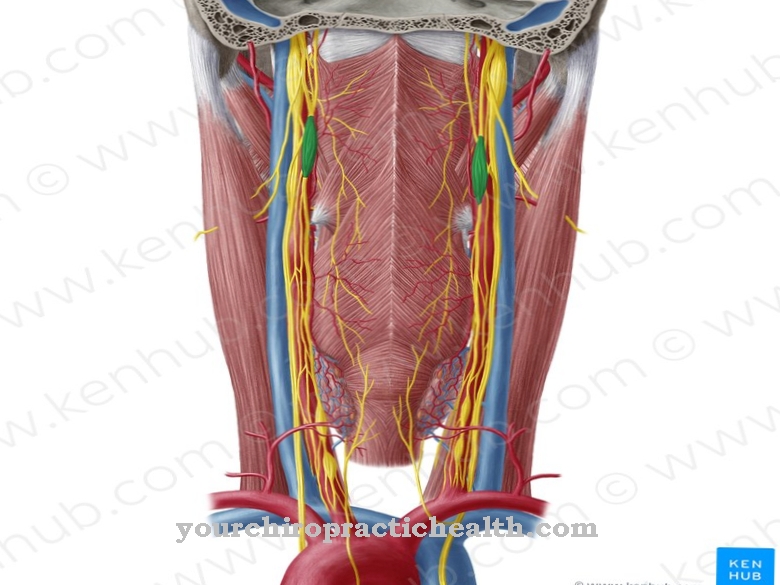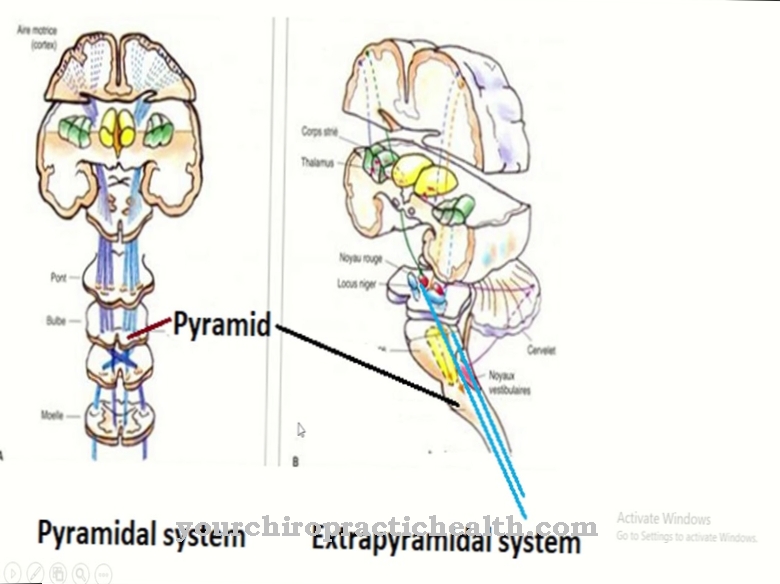Of the olfactory cortex or that too Olfactory brain is the three-layer part of the cerebrum located above the eye sockets, which is responsible for olfactory perception and odor processing.
Although it has hardly any cortical properties in humans, it enables the differentiation of up to a trillion different smells and projects the smell perceptions directly onto brain areas of memory and emotional processing. In the context of various diseases, especially those resulting from degenerative diseases, this area of the brain can take cell damage, which falsifies the perception of smell or even makes it impossible.
What is the olfactory cortex?
The olfactory cortex is also known as the olfactory brain and corresponds to the part of the cerebrum that enables the processing and perception of smells. The system thus corresponds to the part of the olfactory tract that is located in the cerebrum and is also known as the primary olfactory cortex. In connection with the stratification of the brain, the olfactory cortex belongs to the allocortex, i.e. the cerebral cortex, which itself is made up of three to five layers.
The structure of the olfactory brain differs from all other areas of the brain that are related to receptive tasks. While the olfactory cortex in humans does not really do justice to its name, it is much more pronounced in primates. In particular, the olfactory stalk and the olfactory bulb on the same side in humans have only a small number of cells and have thus almost completely lost their cortical properties.
Because of this low level of expression, the olfactory cortex was interpreted as a nerve in the distant past. To this day, the structures of the olfactory brain are actually incorrectly known as the first cranial nerve, the so-called olfactory nerve.
Anatomy & structure
The olfactory system lies above the eye sockets, has three layers and is closely connected to the hippocampus. It can be differentiated into the primary and the secondary olfactory center.
In humans, this system is extremely small, since it has only a low olfactory capacity. The olfactory brain is made up of fibers that project onto certain areas of the brain. This projection mostly targets the piriform cortex, the amygdala and the entorhinal cortex, the latter being related to the processing of feelings and memories, which is responsible for the emotional occupation of olfactory perceptions.
In the olfactory cortex, the cerebral cortex runs forward in a strand to form the olfactory bulb and the olfactory stalk, i.e. the olfactory peduncles. The centripetal pathways of the olfactory brain are formed by the tractus olfactorii lateralis et medialis and the trigonum olfactorium. The secondary, olfactory cortex areas, which are primarily responsible for the identification of smells, overlap with the secondary areas of taste on the orbital prefrontal cortex.
Function & tasks
The task of the olfactory brain is, in the broadest sense, the perception and processing of smells. This processing includes, among other things, the ability to remember certain smell perceptions. Smell perceptions are the only perceptions that reach the thalamus without intervening and that go directly to the cortex.
Together with the nasal-trigeminal system for tactile and chemical stimuli and the gustatory system for taste stimuli, the olfactory cortex is responsible for all olfactory perceptions. An odor is absorbed via the sensory cells of the olfactory mucous membrane by docking its molecules with the receptor molecules of the mucous membrane. The action potentials of the smell reach the inside of the brain via holes in the sieve plate of the ethmoid bone, where in the olfactory cortex sometimes more than 1,000 axons converge simultaneously on a subsequent neuron and allow the signals to converge via scattered sensory cells.
In addition to the connection of the two sides of the olfactory bulb, there is also a connection to memory storage, odor identification and the area of emotions and motivations. Even humans should be able to distinguish around a billion different odor mixtures via the olfactory brain.
You can find your medication here
➔ Medicines for colds and nasal congestionDiseases
In particular, when the cells or fibers of the olfactory cortex are destroyed, confusion or even loss of smell can result. Such destruction of the fibers and cells can be traced back to inflammatory diseases or strokes, for example. Tumors in this area of the brain can also alter or stop the sense of smell if their mass changes the structures of the olfactory cortex.
One of the most common causes of complaints related to olfactory perception is a degenerative disease such as Alzheimer's or Parkinson's, in which parts of the brain perish. The doctor tests the ability to smell during olfactometry. This examination is usually the responsibility of the ear, nose and throat specialist. This olfactory method offers the possibility of early diagnosis of Parkinson's and Alzheimer's, because even in the early phases of both diseases, the olfactory sense changes in around 80 percent of those affected due to irreversible damage to the olfactory system.
Even if the olfactory cortex is damaged, that does not usually mean that olfactory perception can no longer take place at all. As explained above, the taste system also plays a role in the perception of smells. As a result, many of those affected can still smell parts of the olfactory cortex after the loss of the olfactory cortex, but depending on the location of the damage, they can no longer classify smells, for example.








.jpg)



















